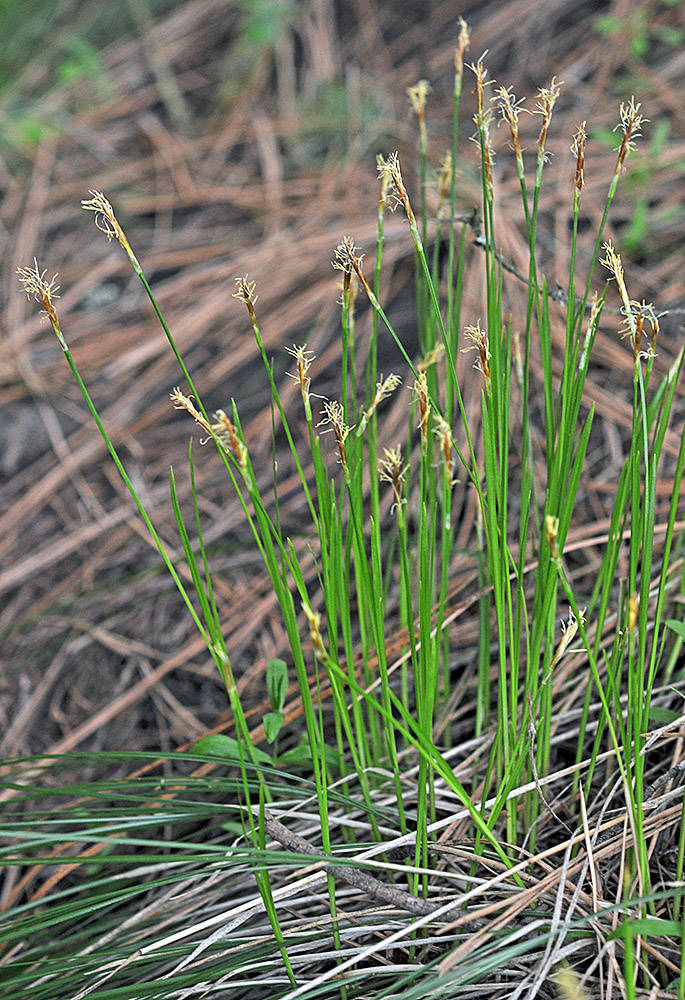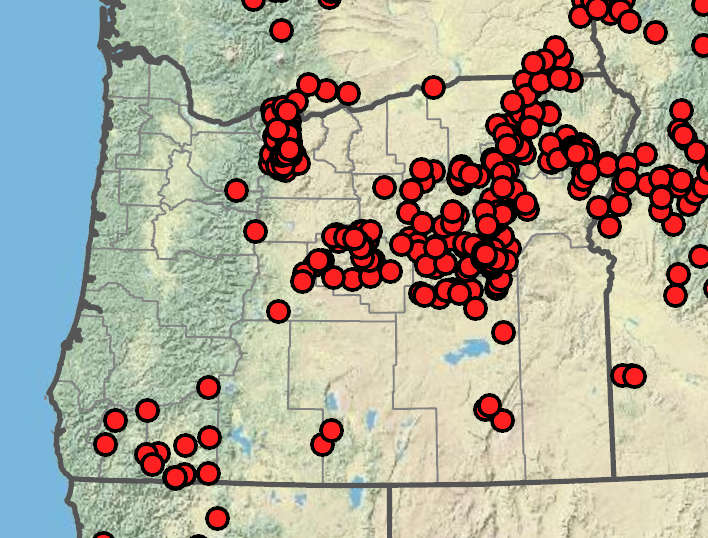Carex geyeri
Cyperaceae
elk sedge
sedge family
usually triangular, occasionally terete, rarely compressed or quadrangular; solid or pithy.
1.1–3.5 mm wide; flat; evergreen; leathery; as long as or longer than the culms.
basal and/or cauline, alternate, usually 3-ranked, bases forming cylindric sheaths enclosing stem;
margins fused;
ligules often present;
blades frequently absent from some basal leaves, rarely from cauline leaves; when present flat, folded, rolled, or terete, linear.
spike solitary, androgynous, lacking inflorescence bracts; male terminal portion 1–2.5 cm long, separated from the 1–3 perigynia by a short internode.
with a shortened axis; floral scales 1–many, crowded, spirally arranged, sometimes 2-ranked, usually each subtending a single flower or perigynium, sometimes proximal and/or distal scales empty; perigynia if present closed or open down one side, subtending and enclosing a very short rachilla-bearing 1-pistillate flower (Carex), sometimes also (0)3 staminate flowers and empty scales (Kobresia);
spikes aggregated into secondary inflorescences that are panicles, often modified and sometimes consisting of a single spike; secondary inflorescences usually subtended by a foliaceous or scale-like or bristle-like bract.
bisexual (unisexual in Carex and Kobresia);
perianth absent or consisting of (1)3–6(30) bristles and/or scales;
stamens usually (1)3, rarely more;
ovary with 1–3(4) carpels, fused; locule 1;
style undivided or branched;
stigmas 2–3(4).
obovate, rounded at the top, 5–7(8.5) × 1.8–2.8 mm, green; whitish, or brown;
beak small;
stigmas 3.
achenes, usually trigonous or biconvex.
trigonous.
the lower longer than the perigynia; the upper reduced; more or less brown with paler midrib and margins, pointed to awned.
Carex geyeri
Cyperaceae
Well-drained soils in dry, open, conifer forests, aspen stands, and openings, rarely in sagebrush, on both serpentine and nonserpentine substrates. 100–2500 m. BR, BW, Col, ECas, Lava, Owy, Sisk. CA, ID, NV, WA; north to southeastern British Columbia, east to CO, PA. Native.
Carex geyeri is a common ground cover in open forest, especially in northeastern Oregon, recognized by its tough, flat, evergreen leaves from dark, scaly rhizomes. Similar pinegrass, Calamagrostis rubescens, usually has hairy internodes and when in flower it is easily distinguished. Carex geyeri is important food for wildlife and livestock, especially in winter. In southwestern Oregon, C. geyeri can be confused with C. multicaulis, which is densely cespitose and has proportionately shorter, usually involute leaves, and longer, green, leaf-like, lower female scales.
Cosmopolitan. Approximately 100 genera; 16 genera treated in Flora.
Cyperaceae (except Eleocharis) is characterized by unusual holocentric chromosomes, in which spindle fibers attach throughout the length of the chromosome, not at discrete centromeres. Also, reduction of chromosome number occurs at the second division of meiosis. These traits are shared with the related family Juncaceae but not by other vascular plants. Chromosome numbers in sedges are often very high, but it is unclear if this represents polyploidy or fragmentation of holocentric chromosomes. When collecting sedges, get the rhizomes (if present) because some species are distinguished by their cespitose or rhizomatous growth form. If possible, collect extra inflorescences because checking floral traits can be destructive. In some genera, species identification requires mature fruits.
Barbara Wilson, Richard Brainerd, Nick Otting
- Local floras:
BC,
CA,
OR,
WA
- Local Web sites:
CalFlora,
CalPhotos,
Flora NW,
PNW Herbaria
WildflowerSearch
iNaturalist (observations)
USDA Plants Database
- LBJ Wildflower Center
- SEINet
- Plants of the World Online
- Encyclopedia of Life
- Wikipedia
- Google Image Search
- Local floras:
CA,
OR
- Local Web sites:
CalFlora,
CalPhotos,
Flora NW,
PNW Herbaria
WildflowerSearch
iNaturalist (observations)
- LBJ Wildflower Center
- SEINet
- Plants of the World Online
- Encyclopedia of Life
- Wikipedia
- Google Image Search



